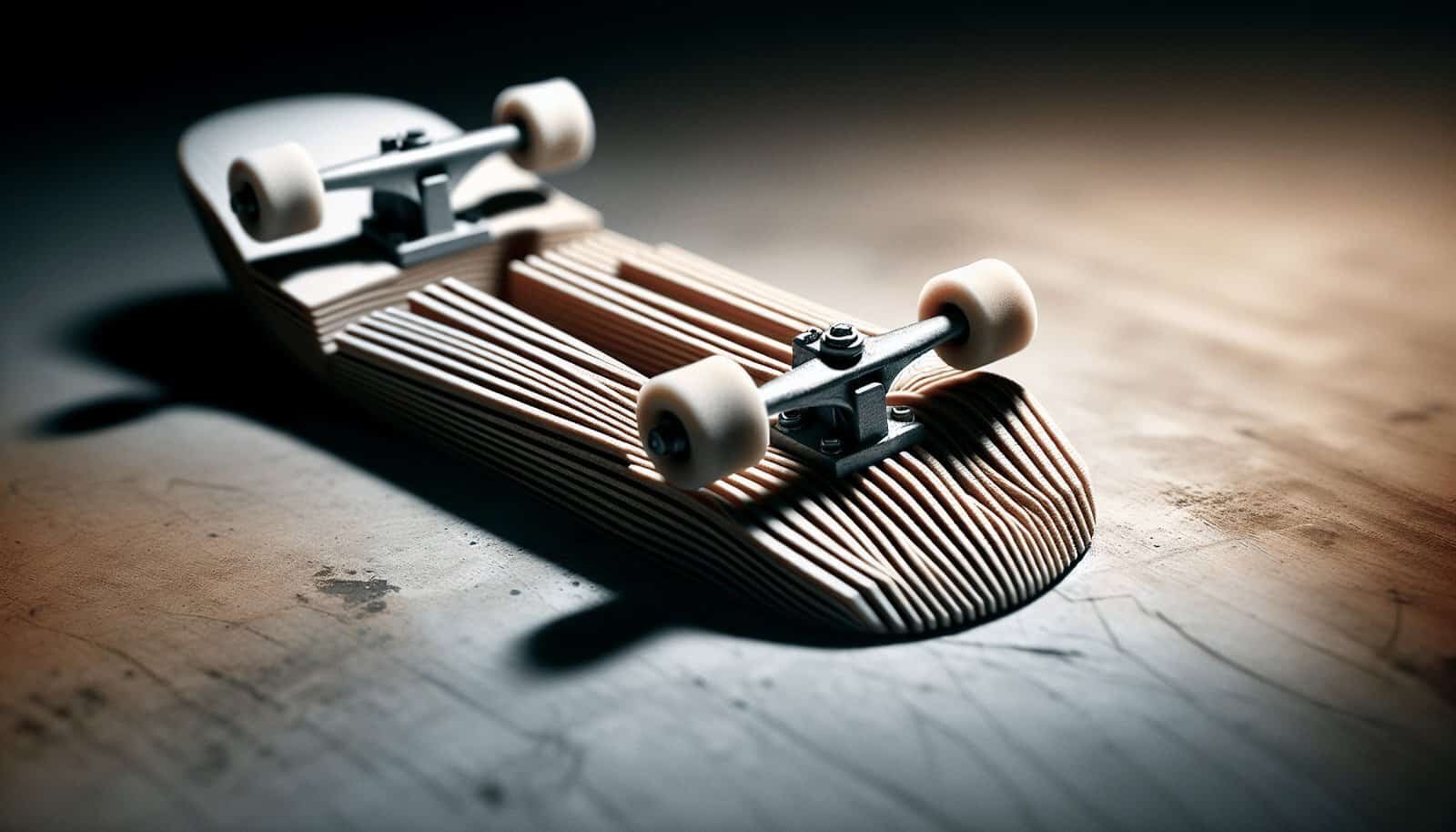Have you ever wondered about the small yet impactful component of your skateboard setup called riser pads? If you’re relatively new to skateboarding or even if you’ve been riding for a while, understanding how these little pieces of hardware can transform your ride may be something that’s slipped past your radar. Let’s embark on a journey to demystify skateboard riser pads, exploring their roles, advantages, and best practices for use.

What Are Skateboard Riser Pads?
Riser pads are thin, durable pieces of plastic or rubber that fit between the skateboard’s deck and its trucks. Despite their seemingly minor role in the overall construction of a skateboard, they carry significant benefits that can alter your riding experience. These pads come in various thicknesses and materials, which can influence how your skateboard performs.
Riser pads are especially essential for certain skateboard setups. By accommodating size differences between wheels and decks, they become invaluable for ensuring both performance efficiency and user safety. At the heart of a riser pad’s purpose is the mitigation of “wheel bite,” a scenario where your board’s wheels make contact with the deck during a sharp turn, potentially causing you to stop abruptly and lose control.
The Key Benefits of Using Riser Pads
A skateboard riser pad might seem like an optional accessory at first, but it brings various benefits that can enhance your skating experience in multiple ways.
Preventing Wheel Bite
Wheel bite is not only annoying but can also pose a safety hazard. This abrupt stop can propel you off the board and to the ground if you aren’t expecting it. Riser pads elevate your board’s deck enough to prevent the wheels from making contact with it, thus decreasing the chance of such an occurrence.
Absorbing Shock
Skateboarding, especially during tricks or stunts, can be hard on your equipment as well as your body. Riser pads can help absorb some of the shocks from impacts, making your landing smoother. This feature is particularly advantageous over time, as it can help in extending the life of your board and reduce wear and tear on other components.
Enhancing Ride Comfort
If your skating involves cruising or longer rides, riser pads can contribute to a more comfortable experience by minimizing the vibrations transferred from the ground to your feet. This comfort enhancement can be beneficial for reducing fatigue during longer rides.
Allowing Larger Wheel Sizes
If you’re interested in using larger wheels for faster speeds or a smoother ride, riser pads can be critical. By providing additional clearance between the deck and the wheels, riser pads allow you to use wheels that otherwise might not fit without making contact with the deck.
When Should Riser Pads Be Used?
Utilizing riser pads can be subjective, often depending on your personal preferences and skating style. Nonetheless, certain situations make the use of riser pads particularly beneficial.
Larger Wheels
If your wheels are larger than 56mm, you may find that your board performs better with riser pads. Larger wheels can make contact with the deck during turns or tricks without them.
Trick and Technical Skating
If you frequently perform tricks that involve significant tail or nose impact, adding riser pads can decrease the shock transferred to your board and body, which protects both and can potentially enhance the longevity of your equipment.
Heavier Riders
Riders who are on the heavier side may benefit from riser pads since the additional weight can cause more compression and increase the likelihood of wheel bite.
Different Types of Riser Pads
Riser pads come in different variations, each designed to cater to specific skating needs. Understanding these can help you select the ideal riser pads for your particular setup and style.
Hard Riser Pads
These are typically made from durable plastics. They are favored by those looking for longevity and minimal energy transfer during rides, as they won’t compress like their softer counterparts. If you’re looking to reduce the clearance between your deck and wheels without adding much cushioning, these might be ideal for you.
Soft Riser Pads
These riser pads, often made of rubber or similar flexible materials, prioritize shock absorption and a smoother ride. They are often preferred for comfort during long rides or when using exceptionally hard wheels.
Angled or Wedge Riser Pads
Angled riser pads are designed to change the angle of the trucks and, in turn, the turning radius of the skateboard. For skaters looking to modify their turning stability and control—oftentimes downhill or slalom skateboarding—they prove incredibly beneficial.

How to Choose the Right Riser Pads for Your Skateboard
The choice depends on your personal requirements and the kind of skateboarding you do. Let’s delve into the considerations needed when selecting the right riser pads.
Wheel Size
Choose riser pads in correlation with your wheel size. For wheels above 56mm, consider a thicker riser pad to prevent wheel bite. A general rule often referenced is around 1/8″ for wheels up to 54mm, 1/4″ for 55-58mm wheels, and larger sizes for larger wheels.
Riding Style
Reflect on how you typically skate. For street skating with a focus on tricks, a thinner pad might be suitable to maintain responsiveness while minimizing a bit of wheel bite. However, if cruising is your primary interest, thicker pads can provide more comfort and reduce vibrations.
Material Preferences
If shock absorption is a key priority, consider softer, rubber-based riser pads. Alternatively, for a more direct response and longevity, a sturdier plastic might be appropriate.
Riding Environment
Finally, consider the terrain. Urban environments with rough roads might benefit from the extra cushioning a softer riser pad can provide, while smoother surfaces may allow for a thinner option.
Table Example: Riser Pad Thickness Guide
| Wheel Size (mm) | Suggested Riser Pad Thickness |
|---|---|
| Up to 54mm | 1/8” |
| 55-58mm | 1/4” |
| 59mm and above | 1/2” or more |
How to Install Riser Pads
Installing riser pads is a simple process that can be done with minimal tools and expertise. Here’s a step-by-step guide to help you easily add them to your skateboard setup.
Gather Your Tools
You’ll need a skate tool or wrench, new bolts if your existing ones aren’t long enough, and your chosen riser pads.
Removing the Trucks
Use a skate tool to loosen and remove the nuts from the bolts holding your trucks to the deck. Slide the trucks off once the nuts are removed.
Placing the Riser Pads
Place the riser pads on the deck, aligning the holes on the pads with the holes on the deck. Press the pads firmly in place.
Reattaching the Trucks
Slide the bolts through the deck and riser pads. Position the truck baseplates over the bolts, then tighten the nuts using your skate tool or wrench until they’re secure. Make sure everything is flush to avoid misalignment or instability while skating.

Do Riser Pads Affect Skateboard Performance?
Indeed, riser pads can affect aspects such as turn radius, stability, and even speed. It boils down to your board’s setup and how riser pads alter these variables.
Turn Radius
Angle riser pads can especially modify the truck’s pivot and consequently alter how sharply your skateboard can turn, either tightening or loosening it based on installation.
Stability and Speed
Increased height from riser pads can potentially affect your balance, especially during tricks. However, they can enhance comfort and control at higher speeds by reducing vibrations.
Alternatives to Riser Pads
At times, you might not want or be able to use traditional riser pads. Here are a few alternatives:
Shock Pads
Similar to riser pads but thinner, shock pads are designed mainly to absorb vibrations without affecting board height significantly.
Truck Modifications
Some truck designs inherently offer wheel bite protection without needing riser pads. Exploring truck options with built-in clearance can be a potential solution.
Wheel Adjustments
Opting for slightly smaller wheels can sometimes eliminate the necessity for riser pads altogether, although it depends on the specific setup and desired riding style.

Conclusion: Do You Really Need Riser Pads?
Ultimately, the decision to use riser pads should be based on your individual needs, skating habits, and personal preferences. By understanding the role they can play in preventing wheel bite, enhancing comfort, and contributing to an optimally enjoyable skateboarding experience, you’ll be better equipped to make an informed choice about integrating them into your setup.
As you ponder whether adding riser pads is right for you, constantly evaluate your riding experience, your skateboard’s performance, and your long-term goals in skating. In doing so, you’ll be setting yourself up for a skating setup that truly fits like a glove.
